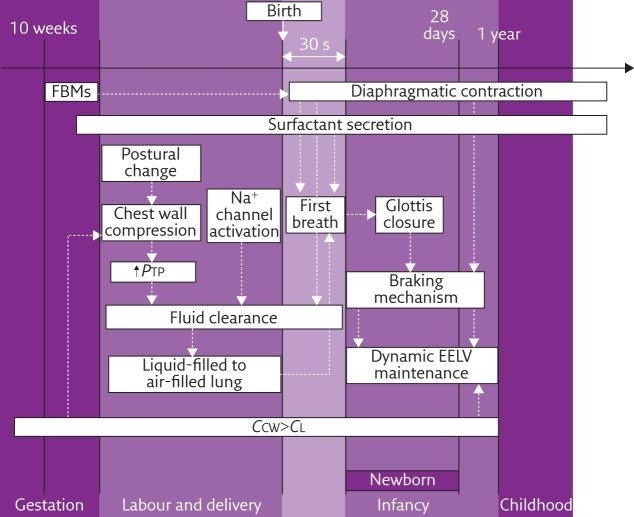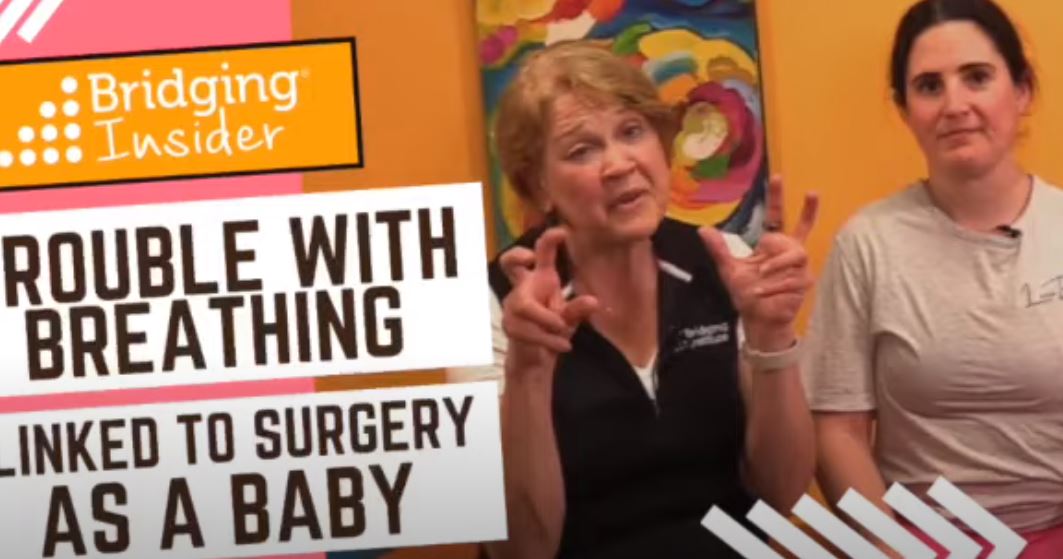Yoga Breathing … Claire’s Quest for Deeper Breathing
The theme for this week … better breathing, from the beginning!
There are myriad interactions between the many muscles used for breathing. These interactions can get off track before birth, during birth, and in the weeks following. This insight played a key role in helping this week’s video guest, Claire.
So, how DO we begin to breathe?
There are so many things that happen at birth which we take for granted, especially breathing. Who would guess the number of muscular and structural relationships involved!
Even more amazing is that the way our little bodies figure out breathing will functionally support, or confound, us for years to come.
A few fascinating tidbits:
- Prenatal lungs are fluid-filled. Prior to birth the lungs are solidly filled with amniotic fluid.
- Prenatal babies rehearse breathing. The mechanics and movements of the chest, lungs, and diaphragm begin practicing long before birth.
- Vaginal compression clears lungs. The sequential mechanical compression during birth clears fluid from the lungs. C-section babies do not clear as much fluid.
- Pressure change allows lungs to fill with air. The temperature change when leaving the uterus creates a pressure differential allowing the lungs to fill. This can take up to 30 seconds after birth. (This is much like pulling a vacuum to fill a syringe.)
A detailed account of the aspects of breathing at birth can be found here.

Graphic Source: Physiology masterclass: Extremes of age: newborn and infancy
The first breath after birth is the most difficult in life. What happens before, during and after it?
Breathe (Sheff). 2016 Mar; 12(1): 65–68.
Insight of the week from Cara
“How does an infant surgery relate to breathing concerns as an adult?”
Birth and early life incidents including surgery, impact a baby’s muscle and structural development which is occurring at lightning speed in this period of life.
There are three aspects to consider:
- Was the original muscle function ever correct? A birth/early life incident can derail the early structural and functional development.
- How does early surgery impact muscle function? An early surgery and subsequent recovery sideline muscle function at the involved area. Also, intricate functional relationships are not allowed to form in the correct sequence.
- If muscle function got off track, how did it shift subsequent functional development? Both birth trauma or infant surgery skew the development of complex muscle coordination (micromovements) because compensations occur. These may not become outwardly apparent until years later.
Compromised development can manifest as challenges to:
- Motor skill development, such as learning to crawl and walk when a baby.
- Coordination, strength, and balance often due to poor core integration while immobilized in NICU or after surgery.
- Self-calming or fatigue related to diaphragm/breathing trauma.
- Sensory system integration such as visual-motor skills or processing speed.
The good news, as seen with Claire’s case, Bridging uniquely recognizes the early life micromovement disruptions and is able to get you back on track, at any age!
Stories from our sessions … “Deeper breathing AND activated abs!”
“I am feeling great. I feel like my breath has been deeper than ever. Still getting caught a little every once in a while and I have to yawn and kind of pop pressure out of my left ear but when I take a breath, it’s much fuller.
What I’ve noticed more is my core activation in my workouts and sitting up from a prone position. I feel like I am stronger in my core and I can sit up super easily with engagement in my torso.”
-Claire’s update a week after the video session
Introducing Claire’s breathing muscles to each other!
Micromovement disrupters
What’s happened to Claire and when?
- Birth/Early life: Forceps delivery. Grapefruit size cyst on neck at birth. This impacted head position development, and sensory development (visual, auditory and balance) since head was off-center.)
- Injury/Accident: Auto accident, moped accident, treadmill fall
- Illness: none of significance
- Medical procedures/surgeries: Surgeries to remove cyst at 4 weeks and 18 months old.
Integrating core and diaphragm function disrupted by surgery as an infant
Goal: Improve deep breathing. She was experiencing a ‘catch’ and difficulty filling the upper chest.
Claire’s main concern is her inability to smoothly get a deep breath. She has been a yoga instructor for years and still struggles to consistently get a deep breath. In addition, she has always felt differences between the right and left sides of her body.
From our prior work together Claire has come to understand how her infant surgeries impacted her muscle development. She requested her medical records and was able to find out the specifics of her two neck surgeries.
The physical positioning of the surgery plays a significant role in how we approach getting her muscle micromovements to engage for better chest movement and deeper breathing.
In this video, you will see the problem-solving process where we check for asymmetries, gaps, and blocks in her micromovement flows. Then we use the gentle Bridging® Technique’s rocking and stretching movements to reset her neck and core muscles.
Yes, you can actually see Claire’s breathing expand and her abs fire up!

